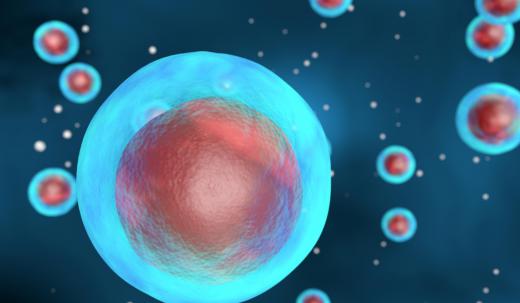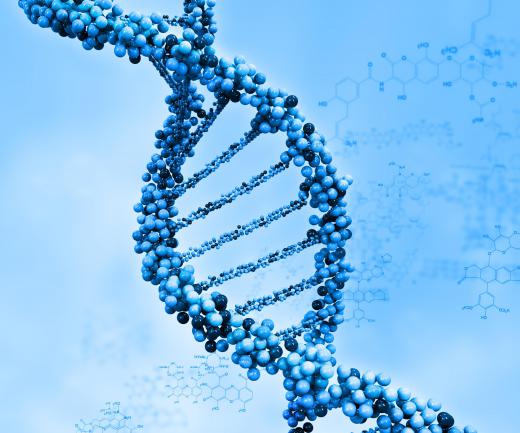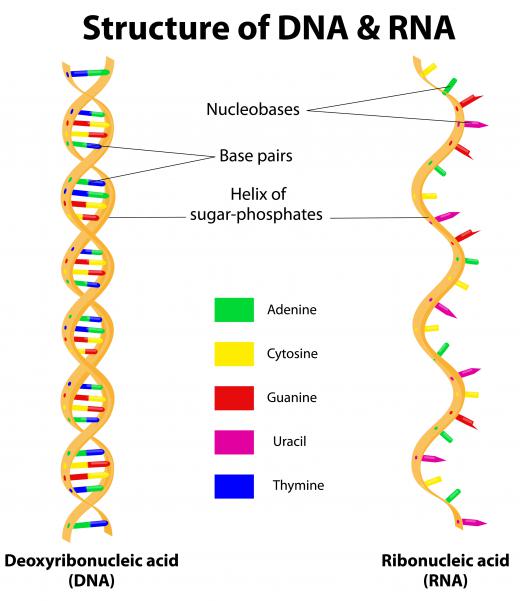What is Protein Synthesis?
Protein synthesis is the process by which individual cells construct proteins. Both deoxyribonucleic acid (DNA) and all types of ribonucleic acid (RNA) are involved in this process. Enzymes in the cell's nucleus begin the process of synthesizing protein by unwinding the needed section of DNA, so that RNA can be made. The RNA forms as a copy of one side of the DNA strand, and is sent to other areas of the cell to aid in the bringing together of different amino acids that form proteins. Protein synthesis is so called because proteins are "synthesized" through mechanical and chemical processes in the cell.
Once the strand of RNA has been made in the nucleus, it is called messenger RNA (mRNA). The mRNA exits the nucleus through tiny openings called nuclear pores, and moves into the larger area of the cell, known as the cytoplasm. Once it exits the nucleus, the mRNA is drawn toward a structure known as a ribosome, which serves as the cell's work station for protein synthesis. At this point, only one sub-unit of the ribosome is present.

As the mRNA binds to the ribosome sub-unit, it triggers the approach of another strand of RNA, called transfer RNA (tRNA). The tRNA strand looks for the proper place to bind to the mRNA, and when it finds it, it attaches to the mRNA, while holding an amino acid on one end. When this occurs, the other sub-unit of the ribosome arrives to form a complete structure. As the ribosome surrounds the strands of RNA, another strand of tRNA approaches. This strand is carrying another amino acid, and is different from the first. Again, the tRNA looks for the proper place to bind to the mRNA.

When the second strand of tRNA is in place with its amino acid, the two amino acids bind together with help from the ribosome, as well as cellular energy in the form of adenosine triphosphate (ATP). This sequence repeats itself, and the chain of amino acids grows longer. When the amino acids have all been placed in the correct sequence, the chain folds into a three-dimensional shape. When this has occurred, the protein is complete.

Once the protein has been successfully made, the two sub-units of the ribosome separate, to be joined again for later use. The process of protein synthesis takes place in numerous ribosomes throughout the cell. A cell which is operating efficiently can synthesize hundreds of proteins every second.
AS FEATURED ON:
AS FEATURED ON:















Discussion Comments
@anon293294: What happens afterwards the article is that the chemical bonds in the amino acids causes them to stick and the protein folds into a 3D structure.
Proteins are made from amino acids, which are polymers of proteins.
How are proteins made?
I think dna is a strand along a chromosome,genes are smaller units along the chromosome. they are the basic unit of inheritance.
I always think of DNA and RNA as part of gene expression. Protein synthesis, of course, is what they really do. It's funny to think that something we usually might think of as just an identification card of sorts in our bodies is actually necessary for making sure our bodies perform all the tasks necessary to sustain life.
Post your comments